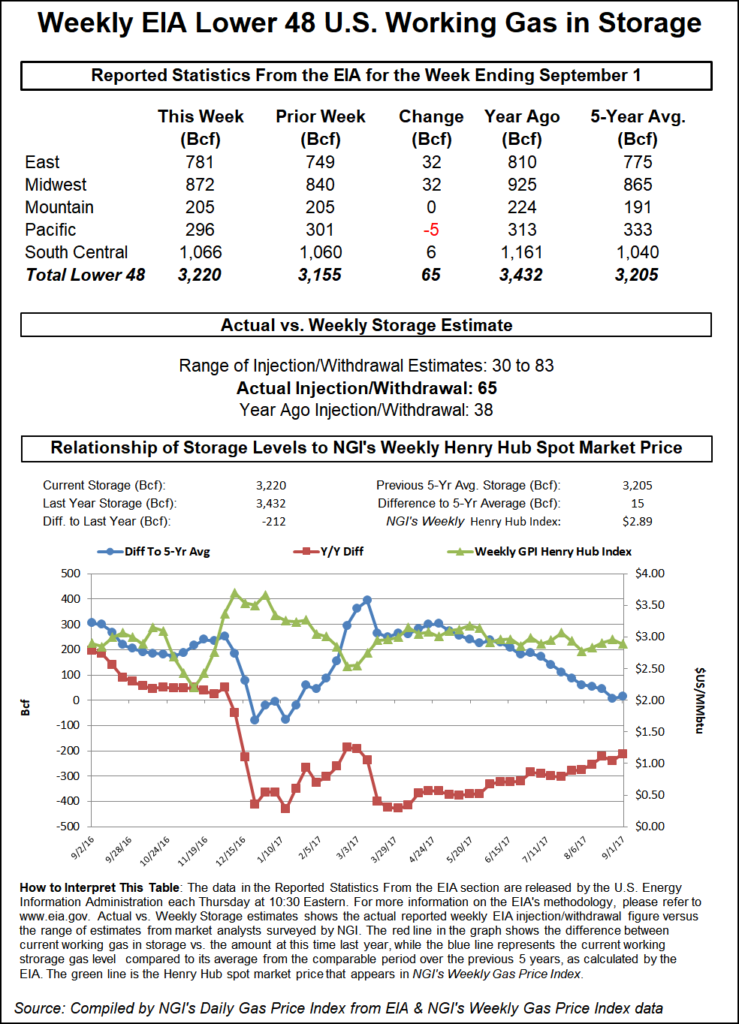Natural Gas Price Bears Have Slight Edge Following On-Target EIA Figures
October natural gas futures inched lower Thursday following a report by the Energy Information Administration (EIA) showing a storage injection that was a hair greater than what traders were expecting. The EIA reported a storage injection of 65 Bcf, about 1 Bcf greater than consensus estimates.

Just prior to the 10:30 a.m. EDT report for the week ending Sept. 1, the market was drifting within a 6-cent range, but when the number was released, October futures posted the low of the session at $2.977 and by 10:45 a.m. the contract was trading at $2.988, down 1.2 cents from Wednesday’s settlement.
Prior to the report traders were looking for a storage build about equal to the actual figures. Last year, however, 38 Bcf was injected and the five-year average build stood at 58 Bcf for the week. Kyle Cooper of ION Energy calculated a 64 Bcf injection and Stephen Smith Energy Associates estimated a 67 Bcf build. A Reuters survey of 22 traders and analysts showed an average 64 Bcf increase with a wide range of plus 30 Bcf to plus 83 Bcf.
“The market is within a 6-cent range so how badly can you get hurt with that,” a New York floor trader said to NGI. “We’ve been trading right around the $3 level for how long now? It’s just kind of stuck in this range.”
The trader said that for the price action to indicate something meaningful it would have to break above $3.10. “Even if we trade above $3 for a couple of days it doesn’t seem to matter. You have to break above $3.10 for a few days and then you might see some momentum to the upside.
“Under $2.90 on the downside, then maybe you would see $2.75. We have just been drifting back and forth now for a long period of time.”
As for the market impact of looming Hurricane Irma “that is already in the market. We know where it is going.”
Inventories now stand at 3,220 Bcf and are 212 Bcf less than last year and 15 Bcf greater than the five-year average. In the East Region 32 Bcf was injected, and the Midwest Region saw inventories rise by 32 Bcf as well. Stocks in the Mountain Region were unchanged and the Pacific Region was down 5 Bcf. The South Central Region added 6 Bcf.
Salt storage rose by 4 Bcf to 266 Bcf and non-salt storage increased 3 Bcf to 800 Bcf.
© 2024 Natural Gas Intelligence. All rights reserved.
ISSN © 1532-1231 | ISSN © 2577-9877 |
